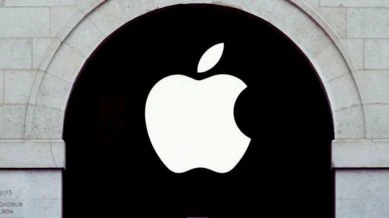Apple Breaks Silence with Groundbreaking AI Advancements for iPhones

In the midst of 2023’s AI frenzy, dominated by Google, Meta, and Microsoft, Apple has seemingly been silent on its AI endeavors, prompting questions well-nigh its position in the AI race. Contrary to appearances, Apple has been diligently working on AI in various capacities over the years, and now, it has unveiled variation techniques that could revolutionize AI integration on iphones.
In a recently published research paper, Apple disclosed a groundbreaking method for running AI on iphones, focusing on streamlining Large Language Models (LLMs) using wink storage optimization. While giants like Google and Meta have showcased their AI products and visions, Apple’s move signals a significant stride in transmissible up with the AI stovepipe race.
The Cupertino-based tech giant introduced two research papers, showcasing advancements in AI, specifically in the domains of 3D avatars and efficient language model inference. The variation research, titled ‘LLM in a Flash: Efficient Large Language Model Inference with Limited Memory,’ could potentially transform the iPhone user wits by offering a increasingly immersive visual wits and enabling wangle to ramified AI systems on iPhones and iPads.
The paper addresses the rencontrer of efficiently running large language models on devices with limited Dynamic Random Wangle Memory (DRAM) capacity. DRAM, known for its fast speed, upper density, affordability, and low power consumption, is usually used in PCs. The research proposes a solution where model parameters are stored in wink memory, exceeding misogynist DRAM, and are transferred to DRAM on demand.
The paper introduces an ‘Inference Cost Model’ to optimize data transfers from wink memory, considering the characteristics of both wink and DRAM. It discusses several key techniques, such as Windowing, which reduces data transfer by reusing previously zingy neurons, and Row-Column Bundling, which increases data permafrost sizes for efficient wink memory reads.
One noteworthy speciality is Sparsity Exploitation, utilizing sparsity in Feed Forward Network (FFN) layers to selectively load parameters and enhance efficiency. Additionally, the paper emphasizes memory management strategies to efficiently handle loaded data in DRAM and minimize overhead.
Apple’s transferral to AI technology is evident in these research papers, which highlight its efforts to develop on-device AI technologies. The ‘LLM in a Flash’ research, specifically, presents a solution to the computational stickup associated with running large language models on devices with limited memory.
The potential applications of these advancements are vast, including the prospect of running generative-AI-powered features directly on iPhones, potentially enhancing Siri’s capabilities for on-device tasks and natural language processing.
Another remarkable minutiae highlighted in the research papers is the ‘Human Gaussian Splats’ (HUGS) method, a neural rendering framework capable of creating fully animatable avatars from short video clips captured on an iPhone in as little as 30 minutes. This innovation showcases Apple’s dedication to pushing the boundaries of AI applications.
While Apple has been perceived by some as lagging overdue in the generative AI race, its recent research suggests a strategic focus on on-device AI capabilities, setting it untied from rivals who largely rely on deject computing platforms. The move aligns with the broader industry trend of incorporating AI features directly into smartphones, with Apple’s research indicating a transferral to AI innovation that runs on personal devices.
As the smartphone market seeks new features to reinvigorate sales, the integration of AI features, expressly those that offer privacy benefits by processing queries directly on the device, could be a game-changer. Apple’s latest research sets a precedent for future advancements, indicating a shift toward harnessing the full potential of AI in a wide range of devices and applications. As the visitor continues to explore the frontiers of AI, users can visualize a transformative impact on their iPhone experiences in the near future.
Apple’s new AI research could completely transform your iPhone
Apple introduces new techniques for 3D avatars & efficient language model inference. Advancements could enable more immersive experiences, allowing complex AI systems to run on iPhones & iPadshttps://t.co/BV0OJ20AgT
— Ignite X (@IgnitePR) December 21, 2023
Read today’s Newslit Daily newsletter!
👓 Apple accelerates Vision Pro production for February debut; deep learning's impact emphasized by Andrew Ng; Apple's AI advancements could revolutionize iPhones; GenAI Prism framework launched for AI teamwork; Financial challenges hit US… pic.twitter.com/PYTQwIJm7W
— Newslit News (@newslit) December 21, 2023



